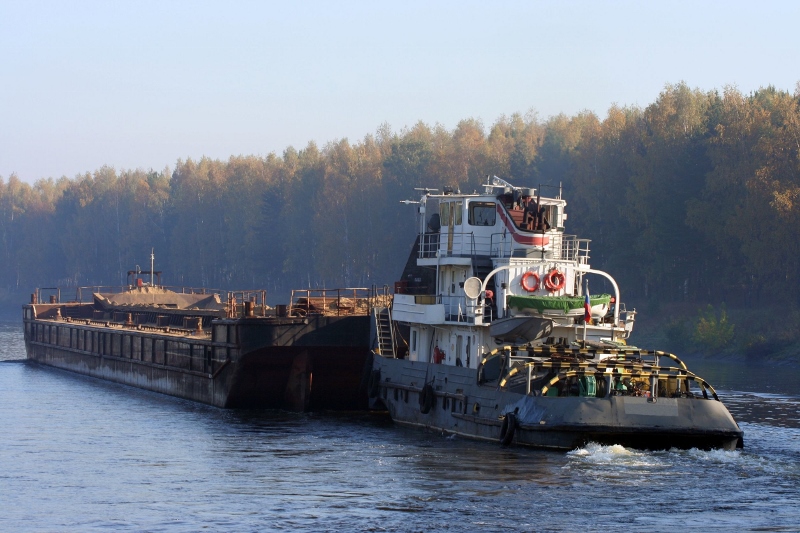The Crazy Ivan maneuver, as practiced by the Soviet submarine commanders, entailed a rapid 180° turn immediately followed by turning on the active sonar to detect their pursuer. For a tug towing a barge the maneuver is very similar, although it’s hopefully executed on the water’s surface and minus the pinging sonar. Sorry, the depth sounder doesn't count.
Usually, the idea is to flip quickly around onto an approximately reciprocal heading to the tow, roughly parallel to it but offset laterally by enough space to prevent colliding head-on with it or being run over by it. Then, depending on the large number of variables usually involved (geographic location, winds, tides, currents, maneuvering characteristics of the tug and tow, water depth, proximity of hazards, how much room and time you have, etc.), either driving back to the tow or, more typically, watching and making adjustments as your tow gradually (or not-so-gradually) overtakes you.
If all goes well you come back alongside your tow, on one side or another of its bow (preferably rather gently, but sometimes not so much), where you either make up in a heads-and-tails alongside tow, disconnect the tow wire to get into push gear, or relinquish the tow to another tug.
It would be a big understatement to say that it’s never done exactly the same way each time. The general principles don’t vary, but when it comes to execution of the maneuver the final details are all dealt with on-the-fly, as the rudder goes over and the action unfolds while numerous fine (or not-so-fine) adjustments are made to pull it off. Maybe it’s even done with some measure of grace and style, or not.
Inevitably, sooner or later, it’ll involve cutting torches and welding rods. It’s just the contact sport nature of it. The Crazy Ivan can make you look like a superstar or a complete loser, and sometimes both during the same maneuver. It all depends on a combination of your judgment, your skills, and plain old luck.




